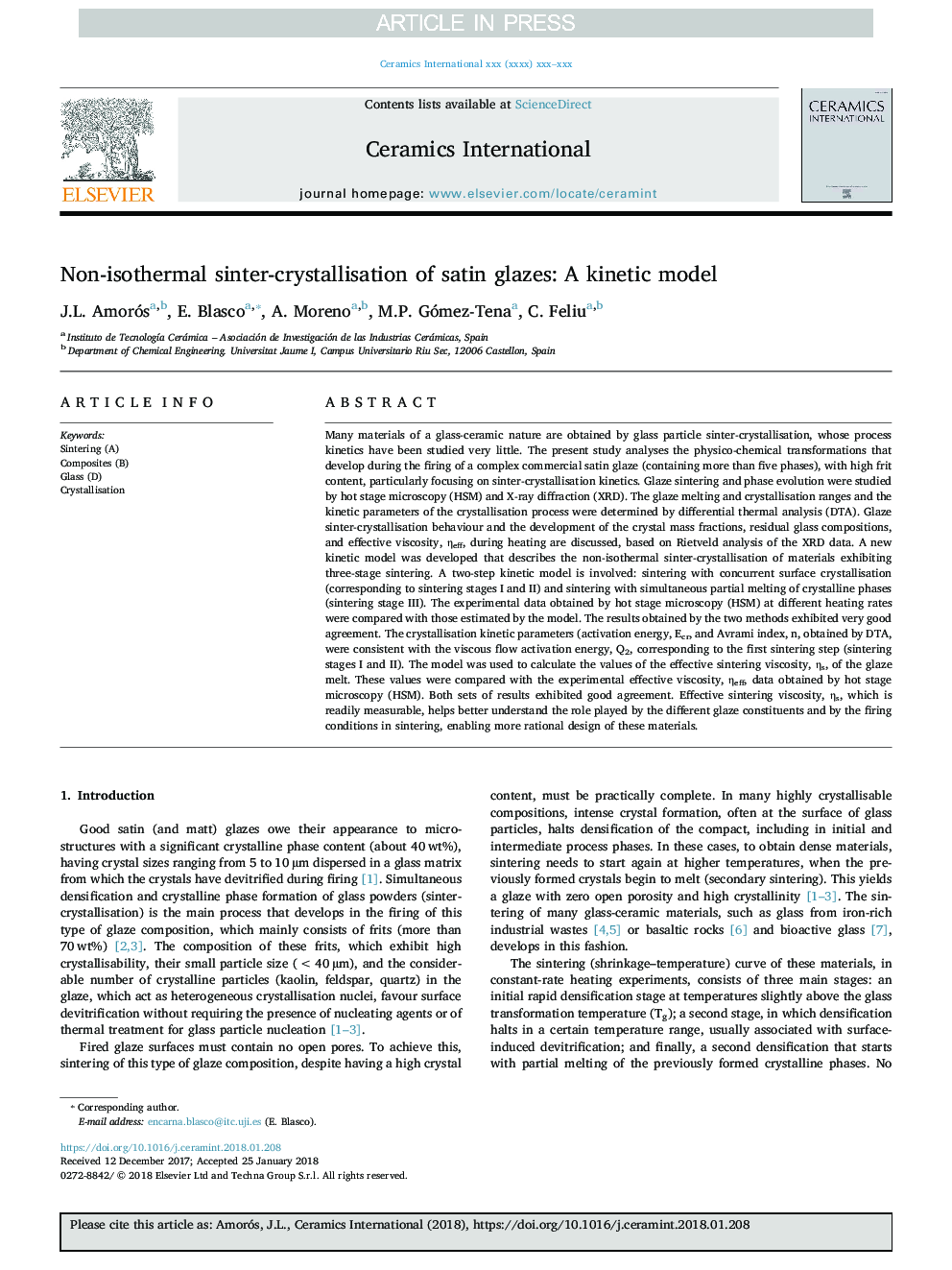| کد مقاله | کد نشریه | سال انتشار | مقاله انگلیسی | نسخه تمام متن |
|---|---|---|---|---|
| 7887667 | 1509791 | 2018 | 8 صفحه PDF | دانلود رایگان |
عنوان انگلیسی مقاله ISI
Non-isothermal sinter-crystallisation of satin glazes: A kinetic model
ترجمه فارسی عنوان
کریستالیزه کردن آلیاژهای غیر ایزوترمالی لاتین ساتن: یک مدل سینتیکی
دانلود مقاله + سفارش ترجمه
دانلود مقاله ISI انگلیسی
رایگان برای ایرانیان
موضوعات مرتبط
مهندسی و علوم پایه
مهندسی مواد
سرامیک و کامپوزیت
چکیده انگلیسی
Many materials of a glass-ceramic nature are obtained by glass particle sinter-crystallisation, whose process kinetics have been studied very little. The present study analyses the physico-chemical transformations that develop during the firing of a complex commercial satin glaze (containing more than five phases), with high frit content, particularly focusing on sinter-crystallisation kinetics. Glaze sintering and phase evolution were studied by hot stage microscopy (HSM) and X-ray diffraction (XRD). The glaze melting and crystallisation ranges and the kinetic parameters of the crystallisation process were determined by differential thermal analysis (DTA). Glaze sinter-crystallisation behaviour and the development of the crystal mass fractions, residual glass compositions, and effective viscosity, ηeff, during heating are discussed, based on Rietveld analysis of the XRD data. A new kinetic model was developed that describes the non-isothermal sinter-crystallisation of materials exhibiting three-stage sintering. A two-step kinetic model is involved: sintering with concurrent surface crystallisation (corresponding to sintering stages I and II) and sintering with simultaneous partial melting of crystalline phases (sintering stage III). The experimental data obtained by hot stage microscopy (HSM) at different heating rates were compared with those estimated by the model. The results obtained by the two methods exhibited very good agreement. The crystallisation kinetic parameters (activation energy, Ecr, and Avrami index, n, obtained by DTA, were consistent with the viscous flow activation energy, Q2, corresponding to the first sintering step (sintering stages I and II). The model was used to calculate the values of the effective sintering viscosity, ηs, of the glaze melt. These values were compared with the experimental effective viscosity, ηeff, data obtained by hot stage microscopy (HSM). Both sets of results exhibited good agreement. Effective sintering viscosity, ηs, which is readily measurable, helps better understand the role played by the different glaze constituents and by the firing conditions in sintering, enabling more rational design of these materials.
ناشر
Database: Elsevier - ScienceDirect (ساینس دایرکت)
Journal: Ceramics International - Volume 44, Issue 7, May 2018, Pages 7780-7787
Journal: Ceramics International - Volume 44, Issue 7, May 2018, Pages 7780-7787
نویسندگان
J.L. Amorós, E. Blasco, A. Moreno, M.P. Gómez-Tena, C. Feliu,
